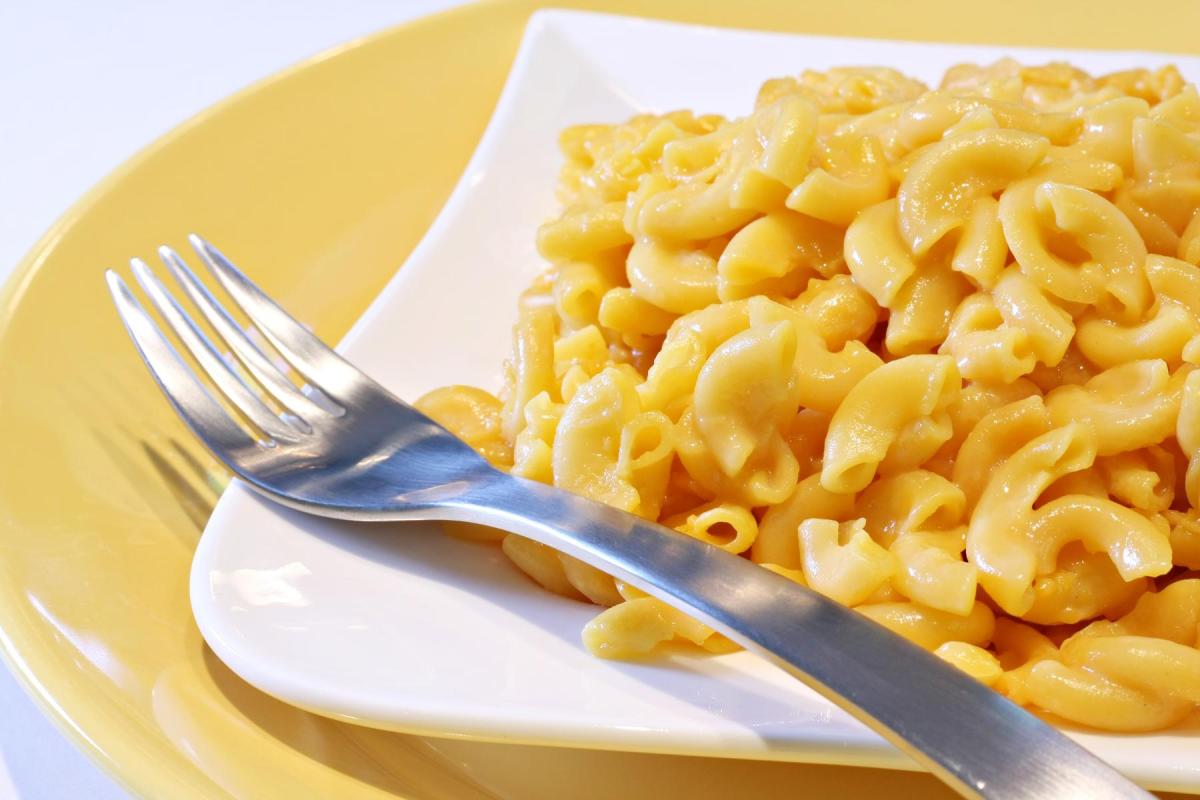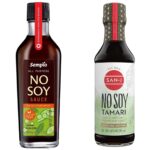Craving creamy, cheesy comfort but avoiding soy? This recipe reimagines the classic mac and cheese, delivering rich flavor and satisfying texture without relying on soy-based ingredients. We explore innovative techniques for achieving that signature creamy sauce, delve into exciting flavor variations, and offer adaptable solutions for diverse dietary needs. Prepare to elevate your comfort food experience to a whole new level!
From selecting the perfect cheeses to mastering the art of a perfectly smooth sauce, this guide provides a comprehensive journey into the world of soy-free mac and cheese. We’ll explore creative flavor combinations, offer helpful tips for achieving optimal texture, and showcase visually stunning plating suggestions. Get ready to transform a familiar favorite into a culinary masterpiece.
Cooking Process & Techniques

Creating a luxuriously creamy and flavorful soy-free mac and cheese requires careful attention to detail throughout the cooking process. The following steps Artikel a method for achieving a truly decadent dish, free from soy-based ingredients. The key lies in building layers of flavor and utilizing techniques that create a rich, velvety sauce.
First, prepare the pasta. Cook 1 pound of elbow macaroni according to package directions in a large pot of salted boiling water until al dente. Drain the pasta, reserving about ½ cup of the pasta cooking water. While the pasta cooks, begin preparing the cheese sauce. This is where the magic happens, transforming simple ingredients into a culinary masterpiece.
Cheese Sauce Preparation
The foundation of any great mac and cheese is a perfectly executed cheese sauce. To achieve a creamy texture without soy, we’ll rely on a roux, a mixture of butter and flour, to thicken the sauce, and a combination of cheeses for optimal flavor and melt. Start by melting 6 tablespoons of unsalted butter in a large saucepan over medium heat. Whisk in ¼ cup of all-purpose flour until smooth, cooking for 1-2 minutes to create a light brown roux. This step is crucial for thickening the sauce and preventing a gritty texture. Gradually whisk in 3 cups of whole milk, ensuring no lumps form. Bring the mixture to a gentle simmer, stirring constantly. Reduce heat to low and simmer for 5-7 minutes, or until the sauce has thickened slightly.
Next, stir in 2 cups of freshly grated sharp cheddar cheese, 1 cup of grated Gruyere cheese, and ½ cup of grated Parmesan cheese. Continue to stir until the cheese is melted and the sauce is smooth and creamy. Season generously with salt and freshly ground black pepper. If the sauce is too thick, add a little of the reserved pasta water, a tablespoon at a time, until you reach your desired consistency. If it’s too thin, continue to simmer gently for a few more minutes, stirring occasionally.
Flavor and Texture Enhancement
Several techniques and additions can elevate your soy-free mac and cheese from good to unforgettable. The following tips will help you achieve the perfect balance of flavor and texture.
- Roast your vegetables: Roasting vegetables like broccoli, cauliflower, or butternut squash adds a depth of flavor and sweetness that complements the richness of the cheese sauce. Simply toss the chopped vegetables with olive oil, salt, and pepper, then roast at 400°F (200°C) for 20-25 minutes until tender and slightly caramelized. Add them to the mac and cheese during the final stages of cooking.
- Use high-quality cheese: The quality of your cheese directly impacts the flavor of your mac and cheese. Opt for freshly grated cheeses whenever possible, as pre-shredded cheese often contains cellulose which can affect the texture. A blend of cheeses, such as cheddar, Gruyere, and Parmesan, provides a complex and satisfying flavor profile.
- Add a touch of acidity: A squeeze of fresh lemon juice or a splash of white wine can brighten the flavors of the cheese sauce and prevent it from becoming too heavy. Add this just before serving.
- Incorporate spices: A pinch of nutmeg or a dash of cayenne pepper can add warmth and complexity to the mac and cheese. Experiment with different spices to find your perfect combination.
- Finish with a crispy topping: For an extra layer of texture, top your mac and cheese with breadcrumbs, panko, or crushed crackers before baking. This creates a delightfully crunchy topping that contrasts beautifully with the creamy interior. Bake at 375°F (190°C) for 15-20 minutes, or until golden brown and bubbly.
Flavor Profiles & Variations
The beauty of a blank canvas, like this soy-free mac and cheese, lies in its adaptability. The fundamental recipe provides a creamy, cheesy base, ready to be transformed with an array of exciting flavor profiles. From subtle enhancements to bold flavor explosions, the possibilities are truly endless, allowing you to tailor this comforting dish to your exact preferences. Experimentation is key to discovering your perfect mac and cheese masterpiece.
The choice of cheese significantly impacts both the taste and texture of the final product. Sharp cheddar delivers a tangy bite, while creamy Gruyère adds a nutty richness. A blend of cheeses often results in the most complex and satisfying flavor profiles. Consider the melting properties of your chosen cheese; some melt more smoothly than others, contributing to the overall creaminess of the dish. Experimenting with different cheeses is highly encouraged to discover your personal favorites.
Flavor Profile Variations
This section details three distinct flavor variations, showcasing the versatility of this soy-free mac and cheese recipe. Each variation offers a unique sensory experience, proving that comfort food can be both satisfying and exciting.
| Variation Name | Key Ingredients | Description |
|---|---|---|
| Spicy Jalapeño Popper Mac | Jalapeños (fresh or pickled), cream cheese, cheddar cheese, bacon bits, green onions | This variation delivers a fiery kick with the addition of jalapeños, balanced by the creaminess of cream cheese and the sharpness of cheddar. Crispy bacon bits add a smoky, salty counterpoint, while fresh green onions provide a vibrant, herbaceous note. Imagine vibrant green jalapeños nestled amongst golden strands of pasta, glistening with melted cheese and speckled with crispy bacon. The aroma is a heady mix of spice, smoke, and cheese. |
| Smoked Gouda and Caramelized Onion Mac | Smoked Gouda cheese, caramelized onions, thyme, a touch of Dijon mustard | This variation offers a sophisticated and deeply flavorful experience. The smoky Gouda provides a rich, nutty taste, complemented by the sweet and savory notes of caramelized onions. A hint of Dijon mustard adds a subtle tang, while fresh thyme contributes an earthy aroma. Picture glistening caramelized onions, their deep brown color contrasting beautifully with the pale yellow of the Gouda-infused mac and cheese. The aroma is a comforting blend of sweetness, smoke, and herbs. |
| Herby Pesto Mac | Fresh basil pesto, Parmesan cheese, sun-dried tomatoes, pine nuts | This variation is bright, fresh, and herbaceous. The vibrant green pesto, made with fresh basil, garlic, and pine nuts, adds a burst of flavor. The nutty Parmesan cheese provides a salty counterpoint, while sun-dried tomatoes contribute a sweet and tangy note. Imagine the vibrant green pesto coating each strand of pasta, flecked with red sun-dried tomatoes and toasted pine nuts. The aroma is fresh, fragrant, and undeniably Italian. |
This soy-free mac and cheese recipe isn’t just a substitute; it’s an elevation. By embracing creative cheese blends and innovative cooking techniques, we’ve unlocked a world of flavor possibilities, proving that delicious comfort food can be both satisfying and adaptable to various dietary needs. So ditch the soy and dive into a culinary adventure that will redefine your expectations of this classic dish. The creamy texture, the rich flavor, the endless variations – this is mac and cheese reimagined.
Answers to Common Questions
Can I use different types of pasta besides elbow macaroni?
Absolutely! Try shells, rotini, or even gluten-free pasta shapes for variety.
How long can I store leftover soy-free mac and cheese?
Store leftovers in an airtight container in the refrigerator for up to 3 days.
Can I freeze this recipe?
Yes, you can freeze the cooked mac and cheese in an airtight container for up to 2 months. Reheat gently on the stovetop or in the microwave.
What are some good cheese alternatives for a richer flavor?
Consider adding Gruyere, Fontina, or a sharp cheddar for a more intense cheese flavor.


